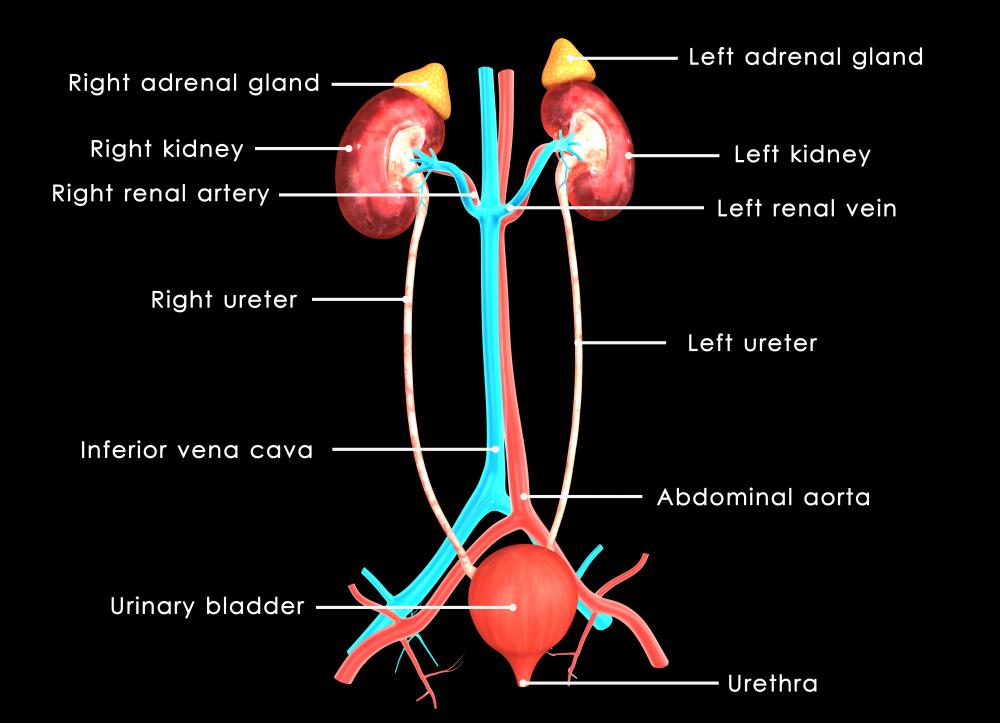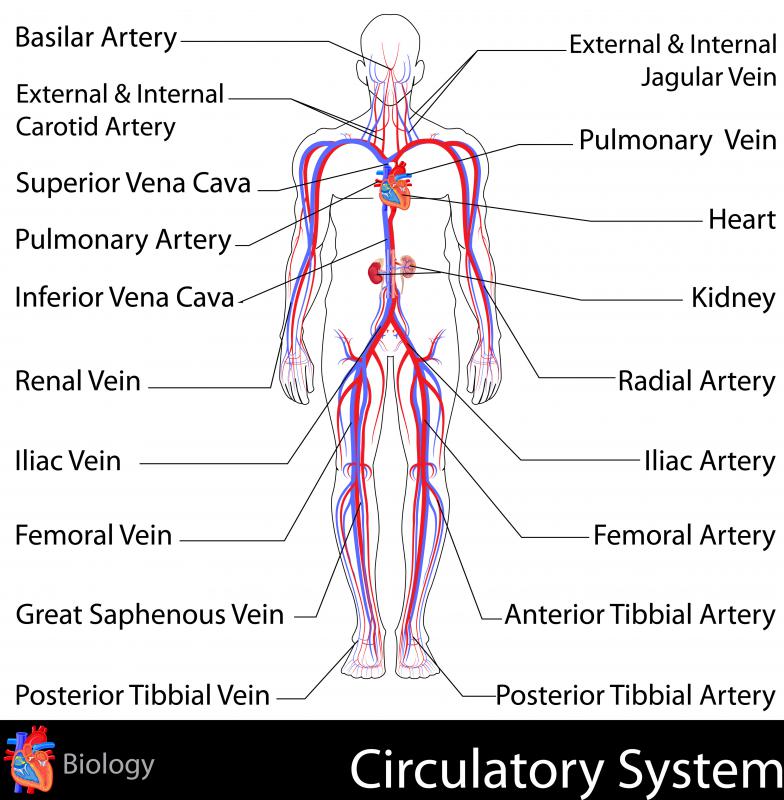At WiseGEEK, we're committed to delivering accurate, trustworthy information. Our expert-authored content is rigorously fact-checked and sourced from credible authorities. Discover how we uphold the highest standards in providing you with reliable knowledge.
What is the Inferior Vena Cava?
The inferior vena cava is a large heart vein that brings deoxygenated blood from parts of the lower body, including the legs, abdomen and pelvis, to the heart to be oxygenated. From the heart, this blood is then pumped back through the body to deliver oxygen to the body cells. Also known as the posterior vena cava, this large vein empties into the right atrium of the heart, connecting on the lower, rear side of the atrium. Its complementary vein, the superior vena cava, which delivers blood from the upper part of the body, also empties into the right atrium but does so through the top part of the chamber.
Numerous veins from the lower part of the body empty into the inferior vena cava, including the iliac, testicilar, hepatic, renal and suprarenal veins. These smaller veins serve specific areas of the lower body, then join together as the blood continues its journey back through the heart. In turn, the iliac vein and other tributaries are fed by even smaller veins, and still smaller veins feed those veins, ensuring that deoxygenated blood from every cell of the body is circulated back through the heart.

Some problems that can develop within the inferior vena cava include compression and thrombosis. Compression is a more common problem with this vein and can occur because of different factors. In some cases, the vein is compressed by the aorta, and, more commonly, by the growing uterus during the course of pregnancy. For this reason, pregnant women are advised to sleep on their left side in order to reduce the possibility of compressing this large vein, which can lead to dizziness and fainting. For the same reasons, unconscious pregnant women should also be turned onto their left sides while awaiting treatment.

Thrombosis of the inferior vena cava is relatively rare and occurs because of various clotting disorders that cause deep vein thrombosis or lead to an overall higher risk of blood clots within the veins. A possible treatment for thrombosis is the placement of a filter, which breaks up developing clots in the vein. Unfortunately, the filter sometimes can cause an obstruction in the vein, which leads to other complications. Additional causes of obstruction, other than compression, include tumors such as renal cell carcinoma. Blockages or other obstructions are also referred to as inferior vena cava syndrome.
AS FEATURED ON:
AS FEATURED ON:














Discussion Comments
If the inferior vena cava gets compressed, like in the pregnancy example, would there be any long term effects for the mother or child?
Maybe I'm wrong, but it seems like a compressed vein would be slightly less serious than a compressed artery, since oxygenated blood would still be getting carried through the body. If the blood isn't getting back to the heart, though, that would still be a problem.
If the vena cava does get compressed, would you know it? The article mentions dizziness and fainting, but if the compression happened while you were sleeping, would you have shortness of breath or some other symptoms that would wake you up?
Are there any other conditions that could lead to a compressed inferior vena cava?
@jmc88 - Thrombosis as I understand it refers to an obstruction in a vein caused by a blood clot. I think they can form in arteries, too.
Deep veins refer to veins that are buried deeper in the body. These are usually the major veins in the body. Obviously, their location and importance make deep vein thrombosis a pretty serious issue. A clot can either blood the flow of blood through the vein, or it can break off and work its way to the heart where it can cause death.
If anyone knows, I would interested in learning how surgeons are able to put in a filter to fix inferior vena cava obstruction. What is the process like, and how exactly do the filters work?
@TreeMan - That's an interesting question. I've never really thought of how large some of our organs are. I looked at a diagram of the inferior vena cava, and it looks like it is basically a straight shot from our heart to our pelvis, so I would say it is only a couple feet maximum in most people. I couldn't find anything about the diameter, so I'd be interested to hear that if anyone knew.
Also, would someone mind explaining thrombosis to me a little better? What is the actual cause and effect? Does thrombosis mean that there is a clot in the vein, or is the clot formed because of thrombosis? What does the term "deep" refer to in deep vein thrombosis, as well?
Does anyone know how long the inferior vena cava is? I always think it is interesting to read about how large some of our body parts really are if they weren't coiled inside of us.
I know the size of the heart is usually misrepresented and is actually only about as big as our fist, so I'd be interested to know the diameter of the vena cava veins, too, if anyone knows.
Post your comments